Steve Oney on John Buntin’s ‘L.A. Noir’
A rare combination of bravura storytelling and social history, “LA Noir” will delight fans of hard-boiled film and fiction even as it challenges the myths of 20th century Los AngelesThis new book will delight fans of hard-boiled film and fiction even as it challenges L myths.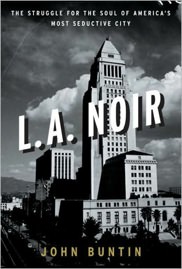
For twenty years beginning in the late 1940s, they battled for the soul of Los Angeles. Representing the underworld was Mickey Cohen. Elegantly turned out and obsessively hygienic (he washed his hands almost hourly), the mob boss was both a thug and a wag, famously boasting to Mike Wallace: “I have killed no men that in the first place didn’t deserve killing.” Standing up for law and order was William Parker. A ruthless straight arrow, the city’s longtime police chief ran a take-no-prisoners department that, in his memorable turn of phrase, formed “the thin blue line” between civilization and chaos.
The clashes between Cohen and Parker were legion and, as long as you weren’t caught in the crossfire, vastly entertaining. The gangster called the chief “a sadistic degenerate” on national television. The chief spoke of the gangster as an unwitting agent of Soviet despotism and tried to nail him for murder. “L.A. Noir: The Struggle for the Soul of America’s Most Seductive City,” John Buntin’s splendid account of the two-decade-long conflict between these titans of darkness and light, relishes every back and forth. Cohen and Parker are still great copy. More than that, however, they are emblems of the split personality that makes Southern California at once a sun-kissed paradise and a vast crime scene.
L.A. Noir: The Struggle for the Soul of America’s Most Seductive City
By John Buntin
Harmony, 432 pages
During the early 1900s developers promoting the population and building boom that transformed Los Angeles from a dusty pueblo into a teeming metropolis sold the city to Midwestern immigrants as “the white spot of America.” The phrase, its racial overtones notwithstanding, had less to do with the pigmentation of the local populace than with the supposed purity of life in a place scented by orange blossoms and cooled by sea breezes. Yet even as boosters were luring newcomers with this halcyon vision, they were countenancing and at times sponsoring a vast array of illicit activities. Gambling parlors, bawdy houses and men’s clubs where, for a price, straight and gay alike could treat themselves to a “twentieth century” (aka oral sex) sprang up all over town. Nearly from the start, Los Angeles evinced a moral ambiguity that far from being hidden beneath the surface, as was the case in the rigidly stratified East, was out in the open. It took a French film critic writing about Hollywood gangster pictures to give a name both to the aesthetic inspired by the city’s high-contrast blend of good and evil and, by implication, the conditions on the ground: noir.
In Cohen and Parker, Buntin, a staff writer at Governing magazine, could not have found two better characters around whom to build a book that is simultaneously a first-rate work of true crime and a fine social history of Los Angeles that takes as its deeper subject one of the city’s defining conflicts.
The Brooklyn-born Cohen moved to Los Angeles in 1916 at age 3 and grew up in the then heavily Jewish Boyle Heights section just east of downtown. His older brothers tried to enroll the pint-size but pugnacious boy in Hebrew school, but he was more interested in action, whether it involved taking over prime street corners for newspaper sales or running a still. He attempted his first heist, a daytime robbery of a movie theater box office, at 9 years old. In his teens, Cohen, a talented boxer, decamped for Lou Stillman’s Gym in New York. Wearing trunks adorned by the star of Israel, he fought as both a flyweight and a bantamweight, forming relationships with everyone from Damon Runyon to gangster Owney Madden. Soon enough, Cohen gave up the gloves for a gun, doing hits for the Cleveland mob and, eventually, Al Capone in Chicago. In 1937 Bugsy Siegel brought Cohen back home to Los Angeles as his enforcer.
The Roman Catholic Parker was also an immigrant to Los Angeles, but from a different America — the mining town of Deadwood, S.D. He arrived in the city in 1922 at age 17 with three younger siblings and his recently divorced mother. Although Parker’s paternal grandfather and namesake had been a United States congressman, the family had fallen on hard times. The oldest son supported the brood by working as an usher at movie palaces along Broadway and as a cabbie. Driven and smart, he enrolled at Southwestern School of Law. But a disastrous, short-lived early marriage and a weakness for drink prompted him to drop out of classes and seek the rigid certainties that only a career in law enforcement can provide. In 1927 Parker joined the LAPD.
Initially, vice in Los Angeles, like much else in the city, was controlled by WASPs. The so-called Combination, with roots in the Pacific Northwest, dominated everything from prostitution and bootlegging to, thanks to well-placed bribes, the police. But the group lost its grip in 1930 when boss Charlie Crawford, known as the Gray Wolf, was gunned down by former deputy district attorney Dave Clark. (The story of Crawford and Clark, which influenced the novels of Raymond Chandler and James M. Cain, is told in Richard Rayner’s recently published “A Bright and Guilty Place.”) In the wake of the Combination’s collapse, Italian and Jewish mob interests from the East moved into what they saw as a promising market. Meanwhile, the Los Angeles Police Department, liberated from Crawford’s influence, adopted a reformist stance.The 1947 assassination of Bugsy Siegel in Beverly Hills put Cohen in charge of the Los Angeles syndicate. In 1950, Parker, who’d gone back to school to get his law degree and won a Purple Heart and achieved the rank of captain in the Army during World War II, became chief of the LAPD. The free-for-all between the two men played out in a rapidly urbanizing city. “The bucolic Los Angeles of blue skies, sunshine and orange groves,” Buntin writes, “had disappeared (or at least withdrawn to the wealthy West Side enclaves like Beverly Hills, Bel Air and Brentwood). In its place was a new Manchester.” The mobster and the chief fought with firearms, publicity and confidential files. This was war. While it may seem campy today, “Dragnet,” the long-running NBC series produced with the chief’s blessing, was intended to be viewed as a realistic depiction of the combat.
L.A. Noir: The Struggle for the Soul of America’s Most Seductive City
By John Buntin
Harmony, 432 pages
Although Cohen and Parker were unwavering in their detestation of each other, they were anything but predictable in other facets of their lives. One of the strengths of “L.A. Noir” is that Buntin is plainly enthralled with his protagonists, and he’s done the sort of careful research that enables him to bring them to life as full-bodied and contradictory characters.
Cohen, it turns out, was an ardent Zionist who helped screenwriter and former Chicago newsman Ben Hecht shake down the Los Angeles mob for donations to the newly formed state of Israel. (Cohen and Hecht collaborated on an unpublished book, the notes for which provided Buntin with a gold mine of material.) At the same time, Cohen was a potential convert to Christ. In the estimation of his friend Billy Graham, the mobster had “the making of one of the greatest gospel preachers of all time.” As for Parker, the police chief was undoubtedly a right-winger, but he was an ardent foe of FBI Director J. Edgar Hoover and a close associate of Robert F. Kennedy, who was possibly more obsessed with organized crime than he was.
By the late 1960s, Cohen and Parker were in decline. The chief didn’t understand Los Angeles’ shifting racial realities. He woefully, indeed willfully, ignored the tensions that would produce the Watts riots, and once the burning and looting began he presided over his department’s failed response. The mobster, meanwhile, met his match not in the LAPD but in the IRS, serving hard time for tax fraud. Los Angeles had passed both men by. Yet each remained formidable and, in his way, representative. As late as 1966, Los Angeles Times Publisher Otis Chandler called Parker “the most powerful man in Los Angeles,” and in 1974 San Francisco newspaper magnate Randolph Hearst recruited Cohen to help find his daughter, Patricia, following her abduction by the Symbionese Liberation Army. At first, the mobster was delighted to be of assistance, but when he learned that the Hearst girl had joined up with the SLA and, if located, might go to prison, he ceased to cooperate. Even at the end, Mickey Cohen wasn’t going to rat anybody out.
Steve Oney is author of “And the Dead Shall Rise: The Murder of Mary Phagan and the Lynching of Leo Frank.”
Your support is crucial...As we navigate an uncertain 2025, with a new administration questioning press freedoms, the risks are clear: our ability to report freely is under threat.
Your tax-deductible donation enables us to dig deeper, delivering fearless investigative reporting and analysis that exposes the reality beneath the headlines — without compromise.
Now is the time to take action. Stand with our courageous journalists. Donate today to protect a free press, uphold democracy and uncover the stories that need to be told.

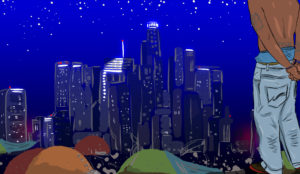
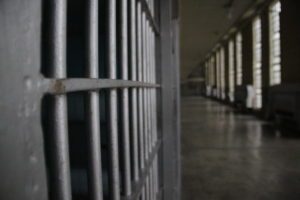
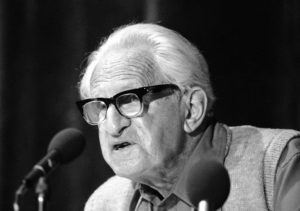
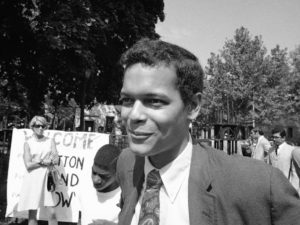
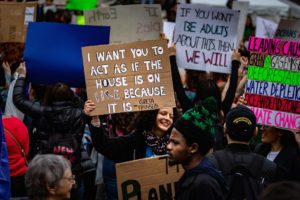
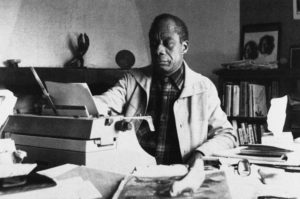
You need to be a supporter to comment.
There are currently no responses to this article.
Be the first to respond.